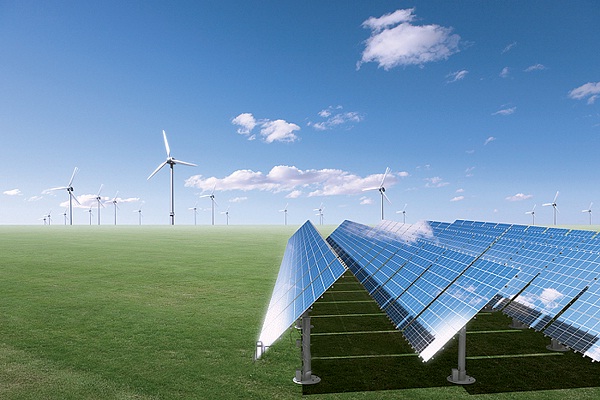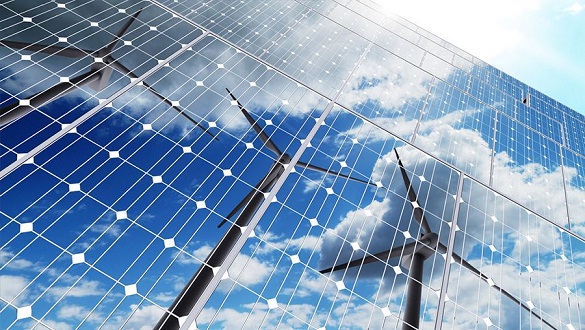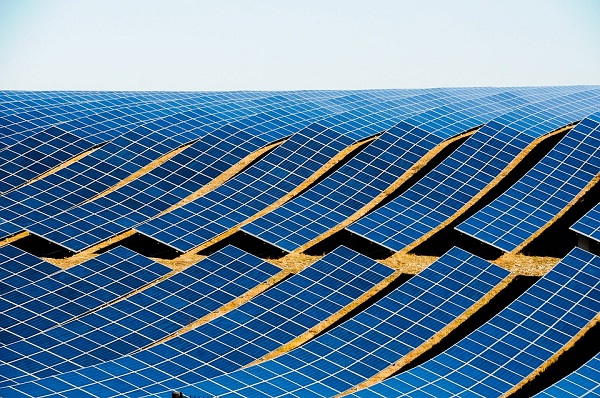The release of a policy, the entire photovoltaic industry for its "crazy dance." As a result, the industry's huge earthquakes came to an end after the National Energy Administration held another press conference on June 11. Some time ago, despite major appeals from various industry associations and PV entrepreneurs and many discussions with relevant departments, the National Energy Administration did not loosen any important policy changes in the “531†New Deal. In other words, after some toss, the "531" New Deal will still be implemented "without a word." In the "Emergency Notice on Doing a Good Job in Photovoltaic Power Generation" issued last week, the National Energy Administration required local and power grid enterprises not to stop without the project being included in the scale of state subsidy construction. This proves once again that the National Energy Administration still supports the development of photovoltaic power generation projects, provided that these projects do not require subsidies.
Regarding the impact of the "531" New Deal on the industry, various analyses have already said a lot. The article before Xiaobian has also been analyzed. The main contradiction lies in the contradiction between the expansion of production capacity and the collapse of market demand. After the scale indicators have been strictly controlled, it is pessimistic that the 10 GW distributed indicators have been exhausted in the first half of the year, while the ordinary power stations are completely extinguished under the combination of the suspension of the indicators and the prohibition of the construction of the first-come-first-served combination. In addition to the poverty alleviation projects and front-runner projects that were treated differently, the PV market in the second half of the year seems to be able to count on projects that are not subsidized. In fact, in the second half of this year, China's PV industry is likely to be forced to enter a "pilot" period of affordable Internet access.

Optimistic expectations, 10 GW of distributed indicators may have to explain otherwise, because what projects are included in the 10 GW indicators, the specific remaining is not conclusive. Ordinary power station projects that are not scheduled for the time being may only be suspended for a period of time. In the second half of the year, it is still possible to issue some size indicators as appropriate.
Regardless of the situation in the second half of the year, it is not realistic to expect changes in policy in the short term. Photovoltaic enterprises must be prepared for the arrival of affordable Internet access in advance. For enterprises, how to obtain profits without relying on subsidies and sell products is a difficult problem to consider. To put it bluntly, after the "531" New Deal, only companies that have solved the market demand problem can survive. There is no doubt that a large-scale reshuffle is coming. Before that, we need to understand clearly what the current policy environment of the PV market is. What are the precious surviving projects in the second half of the year after the “531†New Deal “weaning�
First, the "630" grab has been opened
According to the National Development and Reform Commission's Notice on the Price Policy for Photovoltaic Power Generation Projects in 2018, some PV power plant projects that were filed before 2018 and incorporated into the scale of financial subsidies in previous years, as long as they were put into operation before June 30, 2018, You can enjoy the electricity price subsidy policy (higher subsidies) in previous years. The industry is therefore expected to usher in a wave of "630" rushing in 2018. However, in April of this year, the release of several major industry policies left the market full of fog, and the market wait-and-see mood was strong. The expected "630" rushing tide was never seen. Until the "531" New Deal was released, there were no indicators in the second half of the year. This part of the "630" project instantly became precious. In response to the unprecedented tough attitude of the relevant departments in the "531" New Deal, many PV people once thought that this part of the "630" project could not be spared.

Fortunately, the interpretation document issued by the Energy Bureau on June 11 clearly stated that this "531" New Deal does not involve the "630 Policy", and the previous "630 Policy" has not changed. That is, the projects that have been included in the scope of construction scale subsidies in 2017 and before will be put into operation by the grid before June 30 this year, and continue to implement the 2017 benchmark electricity price.
Up to now, it is already in mid-June, and this part of the project is estimated to be working hard to grab it. Due to time constraints, some projects may fail to install. According to the relevant policies, the project that failed to install the equipment should be the on-grid price in 2018. It is uncertain how much the demand for this “630†rushing project will bring to the “531†New Deal. However, it is expected that at least the photovoltaic market in June-July will play a supporting role.
     Second, photovoltaic poverty alleviation continues to be hot
Even though ordinary and distributed projects have been “coolâ€, PV poverty alleviation projects are supported as always. The benchmark electricity price of village-level photovoltaic poverty alleviation power stations (0.5 MW and below) in line with national policies remains unchanged. In the second half of this year, the village-level photovoltaic poverty alleviation project will become the “sweet†of the industry. Regarding the total amount of this part of the project, it is currently uncertain, but in the second half of the year, this part of the project will become a must for PV companies.
However, it is necessary to worry that after the issuance of the new “Management Measures for Photovoltaic Poverty Alleviation Power Stations†this year, photovoltaic poverty alleviation power stations shall not be in debt construction, and enterprises may not invest in shares. This is equivalent to cutting off the financing lines of the poverty alleviation project, which means that the funding problem of the PV poverty alleviation project will not be solved through financing, and it needs to be fully borne by the local government. Therefore, the number of poverty alleviation power stations can be built, which has nothing to do with the enterprises, but is affected by factors such as local poverty alleviation, the number of local poor households, and the funds of the local government. However, for a PV power plant project, no financing channel will bear a lot of financial pressure. The new policy stipulates that the local government's unilateral financial commitments will probably dampen the government's enthusiasm for developing photovoltaic poverty alleviation projects.
In addition, the National Energy Administration also indicated that this year's "13th Five-Year Plan" second batch of PV poverty alleviation projects will be released, which may have a positive impact on the market in the second half of the year and even in 2019.
Third, the leader project
Another leader who has not been affected by the “531†New Deal is the leader project. The 10 application leading bases in the third batch of leading bases have completed the enterprise optimization work and have now fully entered the implementation stage. According to the policy, the application of the leading base needs to start construction before June 30 this year. A total of 5GW of application leader projects will become crucial for the market in the second half of the year.

The PV poverty alleviation project and the front runner project are just the needs of the market in the second half of the year, but there are not many companies that can enter the supply chain of these projects. Therefore, companies that supply front-runners, poverty alleviation projects, or companies that enter the supply chain of these projects may be better able to cope with the next major cleansing.
It is worth mentioning that the document also mentioned: Considering the obvious effect of the construction of the leading base, the construction of the fourth phase runner base will be launched in due course in the second half of the year. In the future, the construction of the leading base will be the main position and important way for the construction of ordinary power stations.
The release of the second batch of PV poverty alleviation projects and the construction of the fourth phase of the front runner base may have a huge impact on the market in the second half of this year and subsequent.
In addition, the construction scale of the fourth-phase leader base may reach about 10GW. According to the implementation plan of the third-phase runners, each front-runner base has a scale of 500,000 kilowatts, including a total of 6.5 million kilowatts for thirteen bases including the front runner base and the technical leader base. The National Energy Administration's Guiding Opinions on the Implementation of the 13th Five-Year Plan for Renewable Energy Development (Guo Neng Fa Xinneng [2017] No. 31) has a control base of 8 million kilowatts. In other words, the remaining leader of the third period still has no remaining 1.5 million kilowatts. This part of the scale is likely to be incorporated into the construction of the fourth-stage runner base, so the construction of the fourth-stage leader base may reach 9.5 GW.
From the "mainly will take the lead construction as the main position and important way of ordinary power station construction", we can find that the future ordinary photovoltaic power plant project may be invested in the construction of the current leader project, in short, ordinary power station The project is leading the way.
If the “531†New Deal is implemented smoothly, there will be fewer and fewer projects that can be included in the subsidy list in the future. More and more projects will not be subsidized. In the end, except for the leader project as an industry benchmark, all projects may be There will be no more subsidies.
summary
For the development of the photovoltaic market after the New Deal, the OFweek Industrial Research Institute believes that the sharp decline in domestic PV installations in 2018 has become an indisputable fact. It is expected that the domestic installed capacity will be controlled at 30-32GW in 2018, including the record in 2017 but not completed. Installed projects, this part is around 6GW; there is also a 6.5GW front-runner project; in addition, the UHV base + parity demonstration project + household PV project is about 3-5GW; there are village-level poverty alleviation projects 4GW; Connected to the network before the "531", 10GW of distributed projects included in the scope of state subsidies.
Radio Receiver,Satellite Receiver,Home Theater Receiver,Surround Sound Receiver
Zhejiang Huzhou SCVE Machine & Motor Co., Ltd. , https://www.scve-motor.com